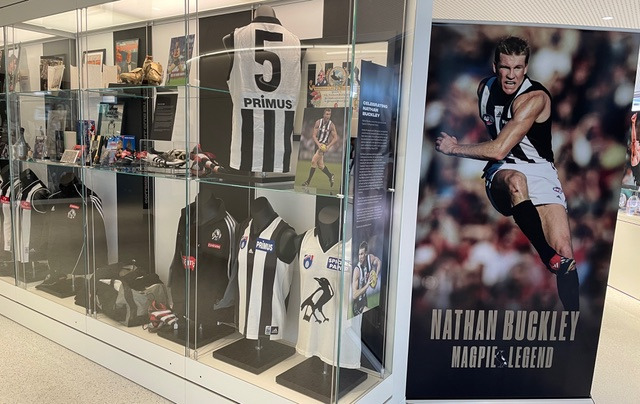

There aren’t too many Collingwood players who have represented their country before they’ve pulled on our black-and-white stripes, but Graeme Shephard is one of the few who can make that claim.
Shephard was the sole Tasmanian representative chosen as part of the famous Galahs tour to Ireland in 1968, where he played alongside such legendary names as Polly Farmer, Peter Hudson, Royce Hart, Alex Jesaulenko and Ron Barassi as they tried their skills – very successfully – at Gaelic football. That Shephard was chosen for such a tour at age 19, and based solely on his exploits for Cooee in Tasmania, says much about the impact he had early in his career in the Apple Isle.
That impact continued after the Galahs tour, and in 1969 he won the Cooee best and fairest, finished runner-up to Darrell Baldock in the North-West Football Union competition best and fairest and also represented Tasmania at the ANFC carnival. So it was seen as a great coup for Collingwood when we pounced on the talented youngster in the wake of those performances, bringing him over to Melbourne for the 1970 season.
There was a lot to like about the versatile rover/centreman/flanker. He was explosively quick and a wonderful ball-handler, both skills which had helped win him selection with the Galahs. He was also adept on both sides of his body, not something that was particularly common in those days. And he was tough – able to withstand the buffeting that came with being in the thick of the action.
He starred in the pre-season practice matches, and it was no surprise when Shephard was chosen to fill in for the injured Ricky Watt on the wing for the Round 3 game against Hawthorn. He was great that day too, kicking a goal, and was elevated for his second game to the position of second rover against Geelong. He kicked two goals that day, but spent his third game sitting on the bench after being harshly demoted to 20thman. He returned to half-forward/roving duties the following week, and kicked two goals against both North Melbourne and Fitzroy, being named among the best players in both games.
The Magpies knew they had found a good player, one who could stand alongside their existing fleet of small men such as Barry Price, Con Britt and the Richardson brothers.
But Shephard’s ascension was rudely interrupted. He came off early in the Fitzroy game complaining of what was variously described as a sore hip, bruised thigh and fluid on the knee. It was initially expected to keep him out for at worst a week, but the problem did not clear up. He was eventually diagnosed with strained knee ligaments, and did not play senior footy again that year.
Disheartened, he returned to Tasmania and resumed playing with Cooee, at least partly in order to rebuild confidence in his knee. By 1972 he was once again playing for Tasmania in the ANFC Carnival, and in 1973 he seemed back to his best, winning both the Cooee B&F and the NWFU B&F. So he returned to Victoria Park to resume his VFL career in 1974.
Shephard enjoyed two hugely underrated seasons back in the VFL. He finished fifth in the Copeland in 1974 and equal fourth in 1975, becoming a consistent performer on a flank or a wing or sometimes in the centre. The Age described him as having "plenty of class" and he was named best on ground on a number of occasions, including one blinder against South Melbourne when he had 35 possessions and kicked three goals. He also walked away with a major prize in an internal players' competition at the end of 1975.
After two highly impressive seasons, Shephard asked for a payrise at the end of the 1975 season. The club refused, and so he once again went back to Cooee, where he played in a Premiership and also coached for a time. After that he went to Mackay for six years, and ended up with three seasons in the bush before retiring at 45. He would later be inducted into the Tasmanian Hall of Fame. His son Heath would flicker briefly on the VFL stage in the late 1980s, bursting onto the scene but then fading out with both the Magpies and later Brisbane.
Graeme Shephard was a seriously talented footballer, and in different circumstances he would have played many more than 46 senior games with Collingwood. The combination of the knee injury, the three-year sabbatical at home and the pay dispute at the end of ’75 combined to limit his output to a much more modest level than would otherwise have been the case.
- Michael Roberts
CFC Career Stats
| Season played | Games | Goals | Finals | Win % |
|---|---|---|---|---|
| 1970, 1974-1975 | 46 | 18 | 3 | 69.6% |
CFC Season by Season Stats
| Season | GP | GL | B | K | H | T | D | Guernsey No. | ||
|---|---|---|---|---|---|---|---|---|---|---|
Other CFC Games
| Team | League | Years Played | Games | Goals |
|---|---|---|---|---|
| Collingwood | Reserves | 1970 - 1975 | 11 | 17 |






